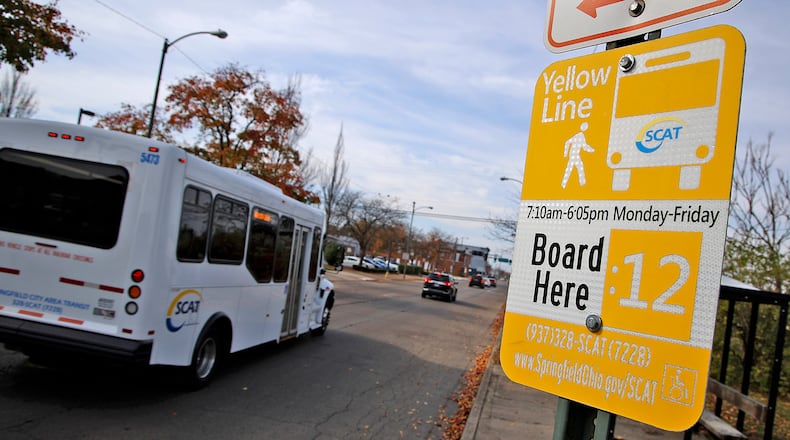That is about to change.
Springfield City Commission is moving ahead with plans for the conversion of city transit away from scheduled bus routes to on demand service, and to switch from large bus service to multiple vans that they say will provide more convenient access, greater comfort and accessibility and faster service to and from destinations.
Most of the funding for the changeover will come from Ohio and U.S. Department of Transportation grants. Commissioners have approved grant applications totaling $637,735 from the Ohio Department of Transportation the Ohio Transit Partnership Program and Urban Transit Program to help cover costs.
Deputy Director of Public Safety and Operations Jason Via says additional dollars that the city had set aside to purchase buses right before the pandemic were never spent because of supply chain issues, so those dollars can now be applied to the new vehicle purchases.
“Those large buses cost in the range of $400,000 each,” Via said. “So there’s still a large pot of money available.”
The city will be requesting bids on all elements related to the conversion. That will require that First Transit, the company that has provided transit services for the city for the past decade, to submit a bid along with other possible vendors.
“In no way, shape or form are we unhappy with the service we have received from them,” Via said. “But with a change in scope of the work and our legal obligations, we want to make sure the bidding process is competitive, and we are getting fair prices and the best product for customers, who are our taxpayers.”
Via said he expects that part of the process to take 60 to 90 days.
“We are going to have to have new software that will help us optimize routes for efficiency. We need to look at maintenance and may have to set up the facilities a little differently because it’s not buses. But I think from the mechanical standpoint, the vehicles are not going to be more difficult to work on, hopefully it should be less,” he said.
The commitment to paratransit availability is being built into services, with specifications for some vehicles including wheelchair accessibility, lifts and walk-on capabilities that will enable the physically disabled or those with mobility issues to get the transportation they need.
“And it will also be easier for people who are carrying kids, equipment or bags,” Via said. “Access will be safely provided, with easy entrance at exit curbside, for everyone who rides.”
Via is hopeful that the process will go smoothly to enable the new system to be in operation before the worst of winter weather begins.
“Hopefully we will be available to help people get to Thanksgiving dinner or go Christmas shopping,” he said.
While the new system will enable people to use credit cards, apps and online scheduling, Via says existing customers will not be left behind.
“A lot of the world is cashless at this point and everything is becoming a digital transaction, but we want to keep serving our existing customers and providing them the best service however they wish to use it. So the plan is to continue to accept cash, to sell tickets and offer discounts for bulk purchasing, but we’ll add on other services such as scheduling online, pay over the phone, use an app - all the other advantages that modern technology offers.”
The new system will have a new name, as yet undetermined. That will come once the branding and marketing firm is selected, also through the competitive bidding process.
Via is optimistic the changes will make transit easier to access and will enable users to get to where they are going faster.
“We are focused on keeping the service affordable and are looking at ways we can price it fairly,” Via says.
In the meantime, plans call for continued communication with the community to address and ease concerns as Springfield’s public transit system transitions into a new century.
About the Author
